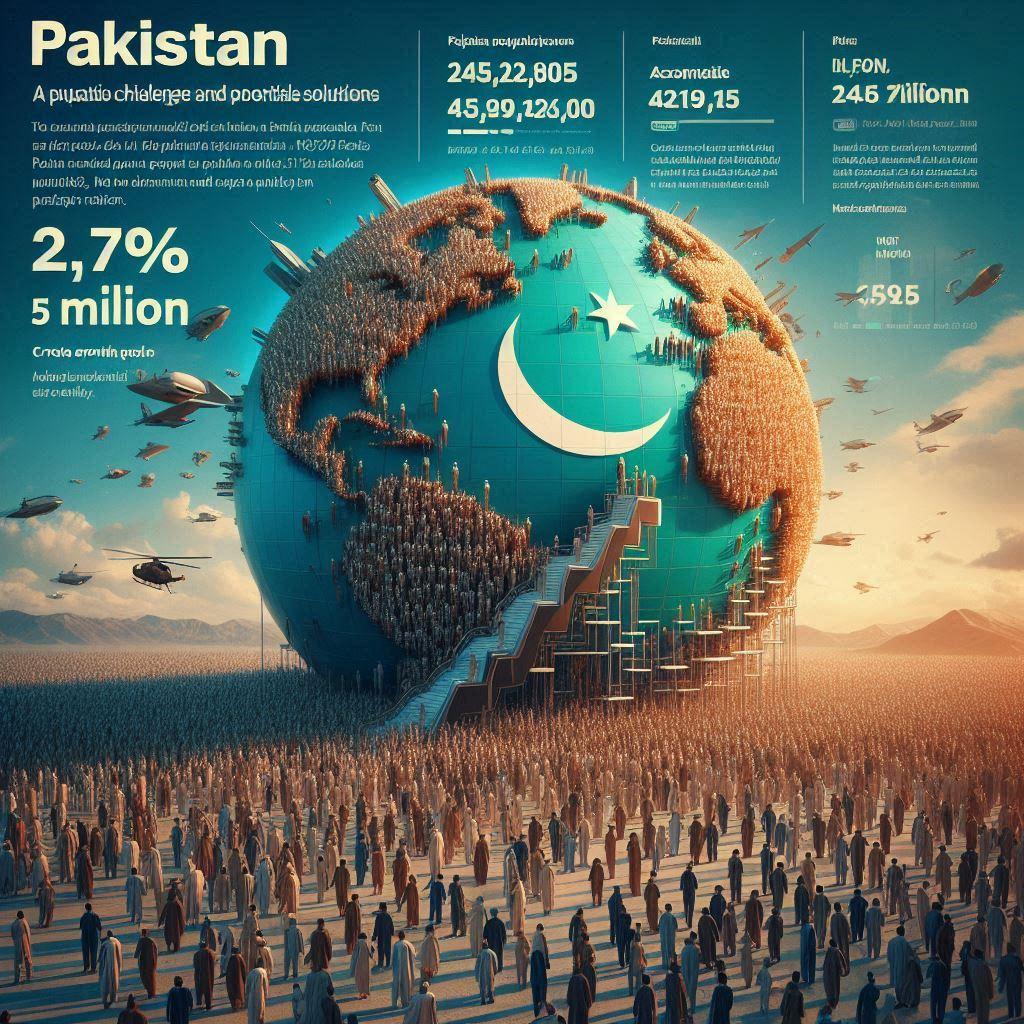Today, we will explore the importance of Research Methodology in EViews. Using research methodologies in tools like EViews allows researchers to manage complex data efficiently. This leads to better insights and solutions for real-world problems in various fields, including agriculture, education, social sciences, religious studies, population studies, and other disciplines.
Types of Research
Research can be broadly categorized into Qualitative and Quantitative types.
Qualitative Research
Focus:
Qualitative research focuses on understanding why something happens. It aims to explore the reasons, motivations, and behaviors behind actions or events. Instead of using numbers and data, it looks at opinions, experiences, and observations.
Nature:
Qualitative research is non-numerical. It is based on collecting words, stories, images, and experiences rather than statistics. The goal is to gain a deep, detailed understanding of the subject.
Used For:
Qualitative research is especially useful for studying:
- Social behavior (how people interact in societies).
- Motivations (why people make certain choices).
- Culture (traditions, beliefs, and societal norms).
Example:
- You might want to understand why rural farmers hesitate to adopt modern technology in Pakistan. You would ask about their fears, their experiences, and how they perceive modern tools.
- You could study why many consumers prefer local products over foreign brands in India. You can explore their cultural pride or concerns about foreign goods by talking to people and gathering their opinions.
Methods:
Qualitative research is often done through direct engagement with people. Here are some common methods:
- Interviews:
- Definition: One-on-one conversations with individuals.
- Purpose: To get detailed, personal opinions and experiences.
- Example: Interviewing a farmer in Pakistan to understand his reasons for not using modern machinery.
- Focus Groups:
- Definition: Small group discussions with selected participants.
- Purpose: To gather diverse opinions and promote discussion on a specific topic.
- Example: A group of consumers in India discussing why they prefer local products over foreign brands.
- Observations:
- Definition: Watching behaviors and events in real settings without interference.
- Purpose: To see how people behave naturally in certain situations.
- Example: Observing factory workers in Bangladesh to understand their daily working conditions.
World Around Us:
- In a study on the Bangladesh garment industry, researchers wanted to understand the working conditions of factory workers.
- They used interviews to speak directly with the workers. These interviews provided personal stories, opinions, and insights that helped the researchers understand their struggles and challenges.
- As a result of this study, policymakers were able to improve labor laws and make the work environment safer.
- Source: World Bank 2021 report.
Conclusion:
Qualitative research is a powerful tool for understanding the deeper reasons behind human behavior and societal issues. It is especially useful in fields like social sciences, psychology, education, and anthropology. While it doesn’t rely on numbers, it offers rich, detailed insights that are critical for making informed decisions, shaping policies, or understanding social trends.
Quantitative Research
Focus:
Quantitative research aims to understand what happens by focusing on numerical data. It answers questions like “How much?”, “How many?”, and “What is the relationship between variables?”
Nature:
Quantitative research deals with numbers, graphs, and statistics. It uses measurable data to uncover patterns, make comparisons, or identify trends. This research is highly structured, objective, and precise.
Used For:
Quantitative research is mainly used for:
- Measuring trends (e.g., how economic indicators change over time).
- Making comparisons between groups (e.g., comparing urban vs. rural internet use).
- Predictions (e.g., forecasting economic growth or consumer behavior).
World Around Us
- In Pakistan, you could study how inflation impacts the demand for basic food items like wheat, rice, and sugar. You would collect data on prices, inflation rates, and food consumption patterns.
- In India, quantitative research can measure the increase in internet users over the past decade. You would analyze data on internet penetration, usage rates, and trends in both urban and rural areas.
- In Bangladesh, you could study how microfinance programs impact poverty reduction in rural areas. You would collect data on the number of loans given, repayment rates, and changes in household income. This data would help assess the role of microfinance in improving livelihoods.
Methodology in Quantitative Research
Quantitative research typically involves the collection and analysis of large amounts of data. Here are some common methods:
1. Surveys:
- Definition: Large-scale data collection with structured questions, often using questionnaires.
- Purpose: To gather numerical data from a large group of people.
- Case Study: Household Income and Expenditure Survey (HIES) in Pakistan
- Context: The Pakistan Bureau of Statistics conducts the HIES to collect data on household income, consumption, and expenditure.
- Method: A large-scale survey using structured questionnaires to gather data from over 24,000 households across Pakistan.
- Findings: The survey helps track trends in poverty, consumption patterns, and the impact of inflation on household budgets.
- Data & Reference: In the 2018-19 survey, 23.5% of the population was found to live below the poverty line. As of 2023, 37.2% of people are expected to live in poverty (on $3.65 a day, based on 2017 prices). This rate is slightly lower than the 39.8% observed in 2018. However, because the population is rising unexpectedly, there are about 3 million more poor people now compared to 2018.
2. Experiments
- Definition: Testing a hypothesis under controlled conditions.
- Purpose: To observe how one variable affects another.
- Case Study: The Impact of Fertilizer Subsidies on Crop Yield in Kenya
- Context: A randomized controlled trial (RCT) was conducted to examine how providing fertilizer subsidies affected maize production in rural Kenya.
- Method: Farmers were divided into two groups: one received subsidized fertilizers, while the other did not.
- Findings: The farmers who received the subsidies saw an average increase in crop yields by 25% compared to the non-receivers group.
- Data & Reference: The results provided evidence to support policy changes in agricultural subsidies. Source: World Bank Report on Agricultural Productivity
3. Statistical Analysis
- Definition: Applying mathematical models and statistical techniques to analyze data.
- Purpose: To identify relationships, trends, or patterns in the data.
- Case Study: Correlation Between Unemployment and Crime Rates in the United States
- Context: Researchers used statistical regression analysis to study the relationship between unemployment rates and crime rates in urban U.S. areas.
- Method: Crime data and unemployment figures were analyzed using econometric models.
- Findings: A positive correlation was found between rising unemployment and increased property crime in major cities during the financial crisis of 2008.
- Data & Reference: The study found that a 1% increase in unemployment led to a 2% increase in property crime. Source: Journal of Quantitative Criminology
4. Secondary Data Analysis
- Definition: Using existing data collected by other researchers, institutions, or government agencies.
- Purpose: To analyze pre-existing datasets to answer new research questions or verify previous findings.
- Case Study: Poverty Trends in Bangladesh using World Bank Data
- Context: Researchers analyzed existing World Bank data on poverty rates in Bangladesh to study economic development over the past two decades.
- Method: Data from the World Bank’s Poverty and Equity Database were used.
- Findings: The poverty rate in Bangladesh fell from 44% in 1991 to 15% in 2016, indicating significant improvements in living standards.
- Data & Reference: The analysis helped shape policies targeting poverty alleviation through microfinance and social programs. Source: World Bank Poverty and Equity Database
5. Longitudinal Studies
- Definition: A study conducted over a long period, tracking the same variables or group of participants to observe changes over time.
- Purpose: To identify trends, causes, and long-term effects of variables.
- Case Study: Long-Term Impact of India’s Midday Meal Scheme
- Context: A longitudinal study was conducted to examine the impact of India’s Midday Meal Scheme on child health and educational outcomes over 15 years. India’s Midday Meal Scheme is a government program launched in 1995 to provide free lunches to children in government and government-aided schools. Its primary goals are to improve child nutrition, boost school enrollment, and reduce dropout rates. The scheme offers hot-cooked meals to children in primary and upper primary classes, especially in rural and underprivileged areas.
- Method: Researchers tracked children in rural India who benefited from the scheme and compared their health and academic performance over time.
- Findings: Children who received midday meals showed 15% higher attendance rates and better academic performance compared to those who didn’t.
- Data & Reference: The study highlighted the program’s role in improving both nutrition and education. Source: National Institute of Nutrition India
6. Cross-Sectional Studies
- Definition: A study that collects data at one point in time from different groups or populations.
- Purpose: To compare variables or identify patterns in specific groups at a specific time.
- Case Study: Economic Status Comparison of Microfinance Participants in Bangladesh
- Context: A cross-sectional study compared the economic status of families involved in microfinance programs with those who were not.
- Method: Researchers collected data from participants of Grameen Bank and other microfinance institutions.
- Findings: Families involved in microfinance programs had 30% higher household income and improved access to education and healthcare.
- Data & Reference: This data provided insight into the effectiveness of microfinance in reducing poverty. Source: Grameen Bank Reports
7. Meta-Analysis
- Definition: Combining the results of multiple studies on a similar topic to draw overall conclusions.
- Purpose: To provide a comprehensive overview by pooling together data from different studies to identify patterns and relationships.
- Case Study: Meta-Analysis of the Impact of Inflation on Household Consumption in South Asia
- Context: Researchers conducted a meta-analysis combining results from several studies on inflation’s effect on household consumption in Pakistan, India, and Bangladesh.
- Method: The data from multiple studies were pooled to identify common patterns and trends.
- Findings: The meta-analysis revealed that a 5% rise in inflation typically leads to a 10% reduction in household spending on non-essential goods across South Asia.
- Data & Reference: This meta-analysis helped policymakers understand regional economic impacts and develop strategies to combat inflation. Source: Asian Development Bank Report
These methods help researchers answer more complex questions and uncover trends that might not be visible through single studies. Each method contributes to the understanding of different phenomena by providing numerical and measurable results.
Application of EViews
EViews is a powerful tool for analyzing data. It is mostly used in quantitative research but can support some qualitative work too.
EViews in Quantitative Research
- Purpose: EViews helps in running statistical tests, making forecasts, and creating graphs.
- Use Case: If you have data on Bangladesh’s inflation over the last twenty years, EViews can help you see trends, make predictions, and understand relationships.
Example:
- In Bangladesh, a researcher wants to study the effect of foreign direct investment (FDI) on economic growth.
- Using EViews, you can:
- Upload FDI and GDP data.
- Run regression analysis.
- Check if FDI positively affects GDP growth.
- Using EViews, you can:
EViews in Qualitative Research
- Purpose: Though limited, EViews can help by organizing large datasets for qualitative research.
- Use Case: If you are working on a qualitative study with survey results from farmers in India, EViews can help summarize the survey results into tables and charts.
Example:
- Healthcare in Pakistan: Suppose you interview 200 doctors about hospital infrastructure.
- You can enter their responses into EViews.
- The software will create charts to help you present the results.
Key Differences Between Qualitative and Quantitative Research
| Feature | Qualitative | Quantitative |
| Data Type | Words, images, opinions | Numbers, statistics, figures |
| Research Focus | Understanding reasons and motivations | Measuring and predicting trends |
| Method | Interviews, focus groups, observation | Surveys, experiments, statistical tools |
| EViews Usage | Limited (data organization) | Strong (statistical analysis, forecasting) |
World Around Us
China’s Population Study: A Quantitative Research Example (2020)
- In China, quantitative research was used to study the country’s population growth. Researchers conducted large-scale surveys to collect data on the population, including birth rates, death rates, and migration patterns. They then used statistical tools to analyze this data and predict future trends.
- This information was crucial for policymakers. It helped them plan for important areas like:
- Housing needs: As the population grows, more houses and apartments are needed.
- Employment: Predictions about future population growth helped the government plan for job creation and economic opportunities.
- For example, if the study showed that a city would grow by 10% in the next decade, they could start building more homes and preparing for a larger workforce.
- Source: UN Population Division. (Link: UN Population Division)
American Education System: A Qualitative Research Example (2020)
In the United States, qualitative research was used to understand why certain groups of students drop out of school at higher rates. Researchers focused on interviews with students, teachers, and school administrators. They wanted to understand the personal experiences and challenges faced by students who were leaving school early.
Key findings from the interviews included:
- Economic challenges: Many students dropped out to support their families financially.
- Cultural barriers: Some minority students felt disconnected from the school environment due to cultural differences.
- Lack of support: Students mentioned they didn’t receive enough guidance or emotional support from teachers.
This research provided insights that helped policymakers develop more inclusive education policies. For example, schools started offering more counseling services and after-school programs to support students at risk of dropping out.
- Source: National Center for Education Statistics (NCES).
India’s Agriculture Reforms: A Combination of Qualitative and Quantitative Research (2021)
In India, both qualitative and quantitative research were used to study the impact of the country’s agriculture reforms.
Qualitative Research: Interviews with Farmers
Researchers conducted interviews with farmers to understand their opinions and challenges related to the new reforms. They gathered information on:
- Farmers’ concerns about market access.
- The role of middlemen in the selling process.
- Fear of price fluctuations after deregulation.
These interviews gave insight into how policy changes were affecting farmers on a personal level.
Quantitative Research: Crop Production Surveys
At the same time, surveys were conducted to collect numerical data on:
- Crop yields before and after the reforms.
- Income levels of farmers.
- Market prices for various crops.
By analyzing this data, researchers were able to measure the real impact of the reforms on production levels and economic gains.
Impact of the Study
The combined research helped the government better understand the effects of the reforms. This led to more targeted policies, such as:
- Price support programs to stabilize farmers’ income.
- Training programs for farmers to adapt to the new market conditions.
- Source: Indian Ministry of Agriculture
This example shows how a mix of qualitative and quantitative methods can provide a comprehensive understanding of complex issues like agricultural reforms. It helps the government design better policies by addressing both personal concerns and measurable outcomes.
Summary
- Qualitative Research helps us understand why things happen.
- Quantitative Research tells us what happens with data and numbers.
- EViews is a useful tool for quantitative research but can also support qualitative data organization.
Can EViews be Applied to Analyze any Field of Study?
We can apply EViews to analyze fields like social, economic, and religious impacts, but the key is to have data that can be analyzed quantitatively. For example, let’s consider the impact of extremism on both Muslims and atheists. Imagine a situation where a French newspaper published cartoons of Prophet Mohammad (PBUH). This led to worldwide protests against this offensive act.
In Pakistan, the response took another extreme. Many Muslim scholars protested outside the French embassy, demanding the government cut off all ties with Western countries. These countrywide protests harmed Pakistan’s economy without creating any real positive action against blasphemy in other regions.
This situation also caused challenges for Muslim minorities living in non-Muslim countries, as well as Muslim diasporas.
Now, the question is: How can EViews approach be adopted to study the social, economic, religious, or other impacts of such incidents?
Blasphemy and Extremism through the Lense of EViews Approach
Let’s break down this approach and see how EViews can be applied to acts of blasphemy and address extremists’ behavior. This will help us analyze the causes of such events and promote the policies to build interfaith harmony.
Step 1: Define the Problem
We want to study the impact of extremism on different groups, like Muslims and atheists, especially in events like the French newspaper publishing cartoons of Prophet Mohammad (PBUH). This involves several aspects:
- Social impacts (on Muslim minorities and diasporas)
- Economic impacts (on the Pakistani economy during protests)
- Religious impacts (how religious groups respond to such events)
Step 2: Identify the Data
EViews works best when you have numerical data. For this scenario, you could gather data on:
- Economic data from Pakistan during the protests.
- GDP growth, trade figures, and unemployment rates before and after protests.
- Social data on Muslim minorities in non-Muslim countries.
- Surveys or reports on discrimination or hate crimes against Muslims after the event.
- Political data on government relations with Western countries.
- Diplomatic ties, sanctions, or trade data after the protests.
How to Collect Data?
- Economic impact in Pakistan:
- Trade data with Western countries (before and after the protests).
- Pakistan’s GDP growth rate during and after the protests.
- Number of businesses affected by the protests.
- Social impact on Muslim minorities:
- Reports on hate crimes or discrimination against Muslims in Europe.
- Survey data on feelings of insecurity among Muslim minorities.
Step 3: Applying EViews
Once you collect the data, you can use EViews to analyze the following:
Economic Impact Analysis
- Method: Run a time series analysis on Pakistan’s economic indicators like GDP, trade, and unemployment rates before, during, and after the protests.
- Outcome: You can identify the economic decline or any long-term damage caused by these protests.
Example:
- Suppose Pakistan’s GDP dropped by 2% during the period of countrywide protests. EViews can help analyze if this drop was directly linked to the economic slowdown caused by the protests.
Social Impact on Muslim Minorities
- Method: Use survey data or reports on hate crimes against Muslims in Europe. Input the numbers into EViews to run regression analysis.
- Outcome: EViews can help you see if there is a correlation between the French cartoon incident and an increase in hate crimes or discrimination against Muslims.
- Example: Let’s say the number of hate crimes against Muslims increased by 5% after the cartoon publication. EViews can analyze this trend and its relation to international incidents.
Step 4: Exploring Other Impacts
You can also use EViews to explore other impacts, like:
- Political impacts: Study how diplomatic relations changed after the protests. This could include analyzing trade or foreign aid data between Pakistan and France.
- Religious impacts: Survey data on Muslim scholars’ reactions and their influence on public opinion could be quantified and analyzed.
Hence
While EViews is mainly used for quantitative analysis, it can be applied to various fields like economics, sociology, and even religious studies, as long as there is data to analyze. In this case, it can help you measure the economic and social impacts of the blasphemy in the origin country and other affected regions. It can help you measure the economic and social impacts of the protests in Pakistan and the Muslim world.
To study these impacts thoroughly: Collect reliable data and then use EViews to run regressions, correlation analysis, or time series analysis to find trends.
This quantitative approach, combined with qualitative insights, can give you a clear picture of how extremism affects different groups and economies.
Conclusion: Research Methodology in EViews
Research methodology plays a key role in understanding different phenomena through both qualitative and quantitative methods.
- Qualitative research helps us understand why things happen by gathering in-depth information from people’s experiences.
- Quantitative research focuses on what happens by using numerical data to find patterns, make predictions, and measure trends.
Tools like EViews are essential in conducting quantitative research, as they help analyze large datasets through:
- Surveys and structured data collection.
- Statistical analysis using mathematical models.
- Predicting future trends and helping policymakers make data-driven decisions.
By applying these research methodologies in tools like EViews, researchers can handle complex data effectively, leading to better insights and solutions for real-world problems across different sectors, such as agriculture, education, religious studies, social sciences, population studies, and other disciplines.
This makes research not only reliable but also practical in shaping policies and strategies.







